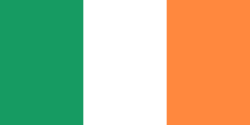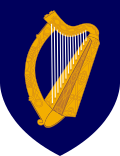

The following outline is provided as an overview of and topical guide to Ireland:
Contents
- General reference
- Geography of Ireland
- Environment of Ireland
- Regions of Ireland
- Demography of Ireland
- Government and politics of Ireland
- Branches of the government of Ireland
- Foreign relations of Ireland
- Law and order in Ireland
- Military of Ireland
- Local government in Ireland
- History of Ireland
- Culture of Ireland
- Art in Ireland
- Sports in Ireland
- Economy and infrastructure of Ireland
- Education in Ireland
- See also
- References
- External links
Republic of Ireland – country in north-western Europe consisting of 26 of the 32 counties of the island of Ireland. The capital and largest city is Dublin, on the eastern side of the island. It shares its only land border with Northern Ireland, which is part of the United Kingdom. It is otherwise surrounded by the Atlantic Ocean, with the Celtic Sea to the south, St George's Channel to the south-east, and the Irish Sea to the east. It is a unitary, parliamentary republic.
Ireland is one of the richest, most developed and peaceful countries on earth, having the fifth highest gross domestic product per capita, second highest gross domestic product (purchasing power parity) per capita and having the fifth highest Human Development Index rank. The country also has the highest quality of life in the world, ranking first in the Economist Intelligence Unit's Quality-of-life index. Ireland was ranked fourth on the Global Peace Index. Ireland also has high rankings for its education system, political freedom and civil rights, press freedom and economic freedom; it was also ranked fourth from the bottom on the Failed States Index, being one of the few "sustainable" states in the world.
Ireland is a member of the EU, the OECD and the UN. Ireland's policy of neutrality means it is not a member of NATO. Ireland participates in a number of cross-border bodies with the United Kingdom as a result of the Good Friday Agreement/Belfast Agreement, and certain government functions, including tourism, food safety and inland waterways, are partially run on an all-island basis. Ireland's population is the fastest growing in Europe, with an annual growth rate of 2.5%.
Note that many geographic and cultural articles on Ireland consider the island of Ireland as a whole, including Northern Ireland, which is part of the United Kingdom. Where no distinct article for the Irish state is available, this outline gives the relevant article for the entire island.




